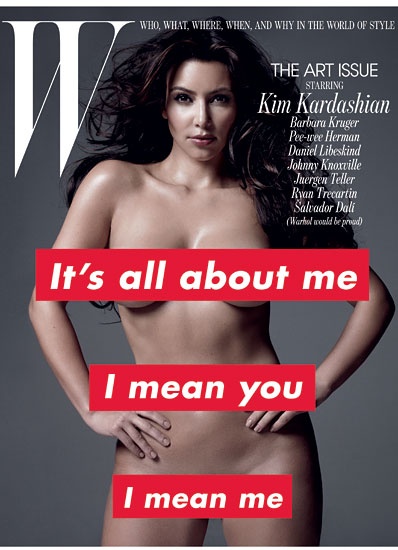Fun Facts about Barbara Kruger | Artlog

In their support of MOCA’s new programming direction, a few have made unsupported claims about the irrelevance of the “old guard” artist-trustees who resigned in protest last month. Aaron Rose, in his “Generation Gap: In Defense of Deitch” piece, said that “Baldessari, Kruger, Opie and Ruscha…are not creating imagery that is relevant to the current century.” On Twitter, the publisher of another LA arts blog even wrote, “I’m glad all these old people are leaving the MOCA board—out with the old and in with the new.”
There are plenty of problems with this type of thinking, which is why this piece at Artlog caught my eye. Barbara Kruger has exhibited with Deitch Projects and was, until recently, one of Jeffrey Deitch’s few defenders (as concerns his leadership at MOCA). For those who might think the “old guard” artists turn up their nose at pop and street culture, Artlog reminds us of the following:
1. Kruger’s professional career started at Condé Nast, working as a graphic designer for Mademoiselle.
2. Her signature style contrasts provocative white-on-red text with black and white appropriated images to make pointed social and cultural critiques. She often uses personal pronouns that include the viewer; for example, “You Are Not Yourself.”
3. Often grouped with other feminist artists, Kruger designed Untitled (Your Body is a Battleground) for the 1989 March on Washington in support of legal abortion.
4. She is responsible for the W magazine cover featuring a nude Kim Kardashian and strategically placed ruminative text.
5. Graphic designer and street artist Shepard Fairey, widely known for his Barack Obama “Hope” poster from the 2008 election, names Kruger as one of his biggest influences. Fairey told Juxtapoz, “My OBEY type logo and the Supreme logo were inspired by Kruger’s work. I owe my red, black, and white color palette to Russian Constructivism and Barbara Kruger.”